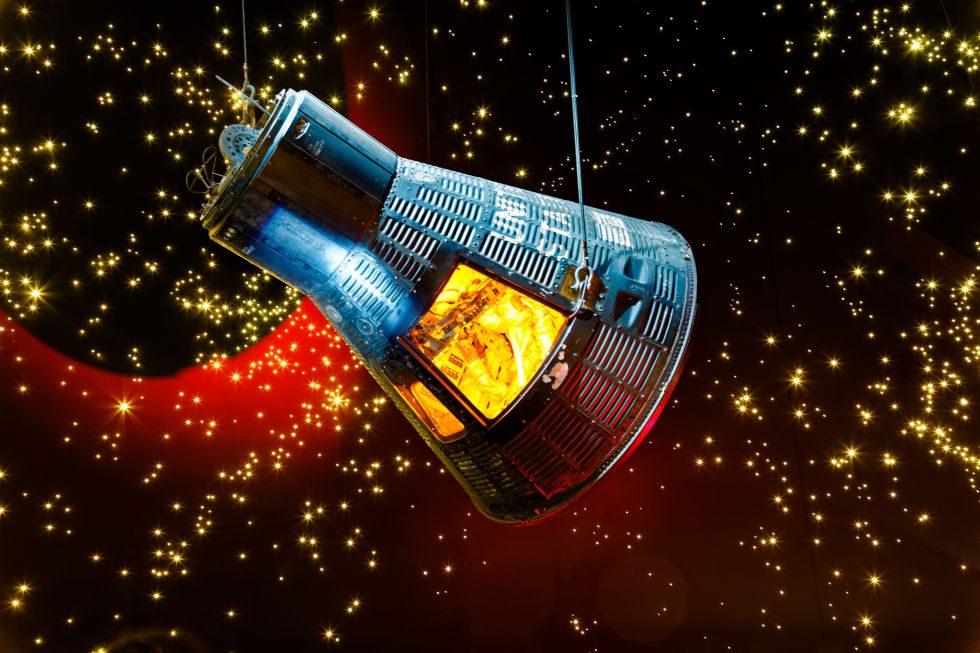 Enlarge / Was this image taken with an iPhone or a DSLR? Spoiler: this one's from a DSLR, on a tripod, with a long exposure and a fair amount of post-processing. This is Gordon Cooper's "Faith 7" Mercury capsule, on display at Space Center Houston. Lee Hutchinson
Enlarge / Was this image taken with an iPhone or a DSLR? Spoiler: this one's from a DSLR, on a tripod, with a long exposure and a fair amount of post-processing. This is Gordon Cooper's "Faith 7" Mercury capsule, on display at Space Center Houston. Lee Hutchinson "The best camera," goes the old saying, "is the one you have with you." It's true, too—spend just a few minutes browsing places like /r/pics and you'll find stunning image after stunning image taken on a wide variety of cameras, from DSLRs with telephoto lenses all the way down to smartphones. A modern smartphone is equipped with a hell of a lot of picture-taking power and can spit out pro-looking images without a whole lot of effort, and nearly everyone has one on them all the time. Does that mean, then, that the best camera today is a smartphone?
Further Reading Shootout: How does a high-end smartphone camera compare to a $3,400 DSLR?
Shootout: How does a high-end smartphone camera compare to a $3,400 DSLR? Ars pits the iPhone 6 Plus against $8,000 worth of pro gear to find out.
We explored this in our October 2014 "iPhone vs. DSLR" shootout—and we learned a lot. The first lesson was, at least according to a whole lot of people, that I suck at photography. And that's all right—I do suck at photography. Most of the images I take are properly called "product photography," done inside in studio conditions with lots of lights and not necessarily a lot of variation in settings. Shooting in the real world is a lot more complicated.
More importantly, we proved conventional wisdom right. A smartphone does take awesome pictures, so you don't need a DSLR, two bags of gear, and a tripod unless you really need an expensive DSLR, two bags of gear, and a tripod.
But—there's always a but!—when used properly, especially under anything less than ideal outdoor lighting conditions, that expensive DSLR with its thousands of dollars' worth of lenses and off-camera flashes can produce wondrous results. Do some post-processing in an application like Lightroom or DxO and you can get some stunning images that would be nearly impossible to pull out of a smartphone. Sometimes, at least.
Round two: Fight!About 15 months have passed since the initial shootout, and I've tried to spend that time brushing up on my photography. I've dragged my Canon 5D Mark III around on every trip I've taken in the past year, shooting close to 20,000 pictures (some of which even came out well). I can't guarantee I've gotten any better at photography in general, but I've certainly gotten a lot more experienced. My subjective evaluation of my picture-taking skill is still all over the map, but I like to think I've climbed a bit since last time.
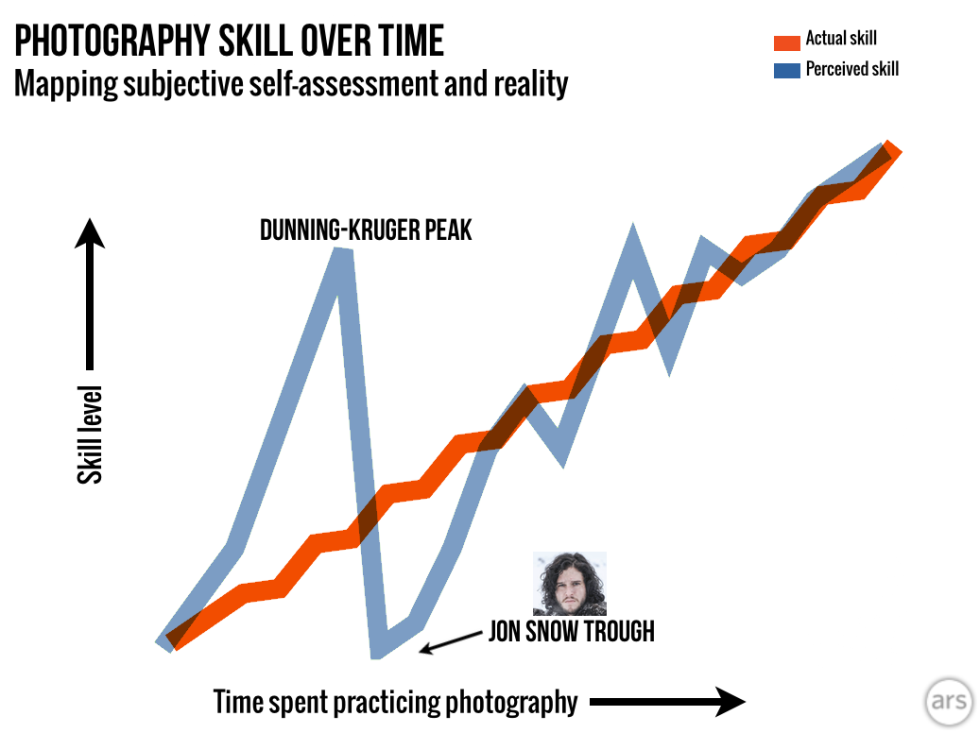 Enlarge / Another lesson: You tend to think you're better at photography than you actually are. Coupled with the release of a new iPhone—equipped with what by all accounts is a pretty darn good smartphone camera—we decided the time was right to revisit the smartphone vs. DSLR question at Ars. And this time around, we set out to use a much broader variety of locations.
Enlarge / Another lesson: You tend to think you're better at photography than you actually are. Coupled with the release of a new iPhone—equipped with what by all accounts is a pretty darn good smartphone camera—we decided the time was right to revisit the smartphone vs. DSLR question at Ars. And this time around, we set out to use a much broader variety of locations. For the smartphone side, I'm using my personal device, an iPhone 6S Plus. This is a current-generation iPhone with about as sophisticated a camera as you're likely to find on a smartphone (though our Microsoft master Peter Bright preferred the camera on the Lumia 950 he recently reviewed). The iPhone has a 12-megapixel rear camera with an f/2.2 aperture (some sites quote it as f/2.0, but EXIF data from the phone's pictures says f/2.2), an 8.47mm sensor with tiny 1.2μm pixels specifically designed to cut down on crosstalk, and optical image stabilization. It's also backed by sophisticated software that does its best to produce viewable, well-exposed images under any circumstances (without a third-party camera app, specific exposure settings like aperture and shutter speed are not modifiable, so with an iPhone you're always shooting on auto).
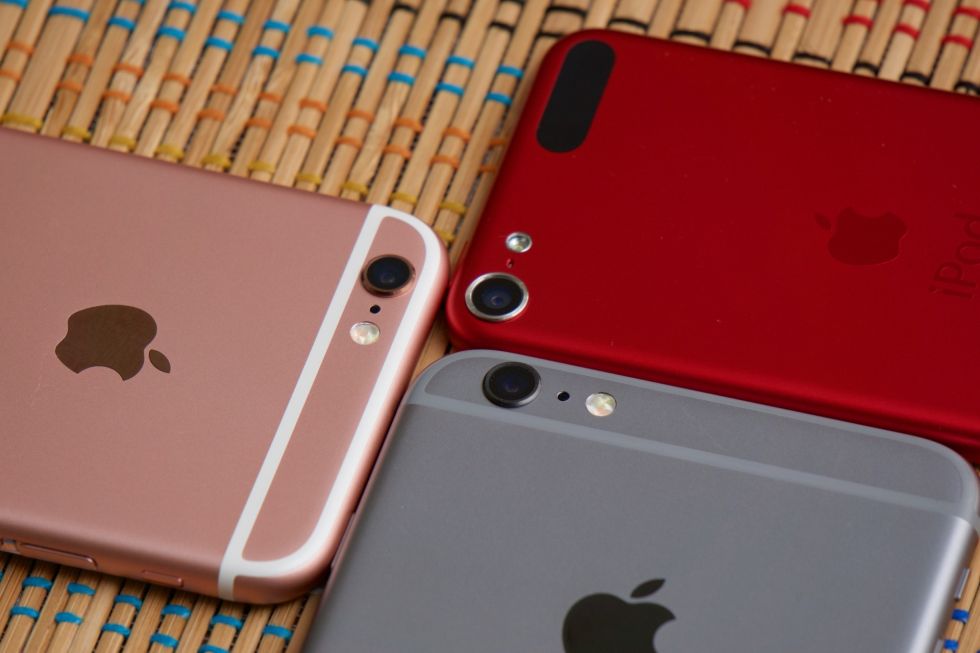 Enlarge / Apple's current generation of smartphone cameras all have bumps. For this piece, we used an iPhone 6S Plus (bottom, in gray) for our smartphone camera. Andrew Cunningham
Enlarge / Apple's current generation of smartphone cameras all have bumps. For this piece, we used an iPhone 6S Plus (bottom, in gray) for our smartphone camera. Andrew Cunningham On the DSLR side, we're still shooting on the same Canon 5D Mark III body we used last year. It has a 22-megapixel sensor that measures 35mm diagonally, the same size as a frame of 35mm film (hence why the camera is referred to as a "full frame" DSLR). For lenses, we've upped our game a bit this year, relying on five different pieces of Canon glass—three zoom lenses and two primes:
All told, that's about $5,200 worth of lenses. The 24-70mm and the 35mm prime are both extremely high quality, which is why I rented them (though only a couple of images taken with the 24-70mm ended up in this shootout—I used it extensively for taking pictures of jets and moon rocks). The 24-105mm and the 70-200mm are solid workhorse lenses that you'd find in most Canon shooters' kits, and the little "nifty fifty" 50mm f/1.8 is pretty crazily affordable for the image quality it yields (I use it mostly for product shots).
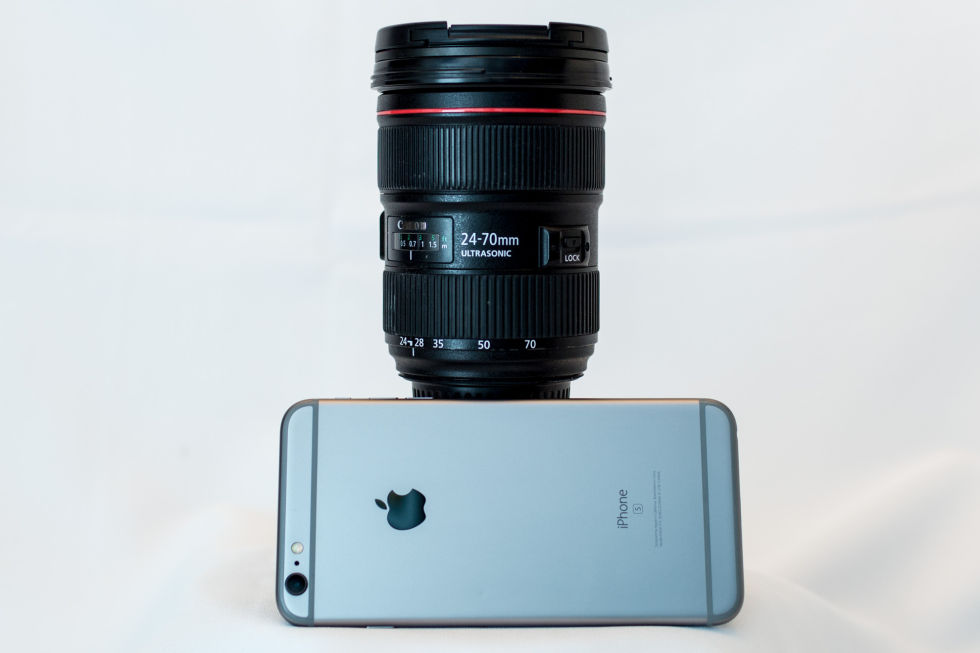 Enlarge / This is one of the lenses I rented to use for this shootout (though I ended up using it a lot more for other stories). This single lens by itself costs more than double the price of my unlocked 64GB iPhone 6S Plus.
Enlarge / This is one of the lenses I rented to use for this shootout (though I ended up using it a lot more for other stories). This single lens by itself costs more than double the price of my unlocked 64GB iPhone 6S Plus. The DSLR body itself costs $2,500; add to that the cost of the 600EX-RT and 430EX II flashes I used for some of the images and the tripod I used for a few others (not to mention the bag to haul the whole mess around in), and you've got damn near $9,000 dollars' worth of equipment.
All this kind of makes that 64GB $849 iPhone 6S Plus look like a crazy bargain—and one that can do things the DSLR can't, like shoot 4K video. At 10 times the cost, does a bag stuffed with lenses, flashes, and a DSLR really provide 10 times the image quality of a smartphone?
Maybe—or maybe not. As with all things, the devil is in the details.
How we testedWe took our iPhone and our DSLR bag to several different indoor and outdoor locations and shot hundreds of images with each. Rather than try to manually match settings on both devices like we did last time, this time around we relied on the iPhone's built-in camera app to do its thing and produce whatever it thought was the best image of whatever we were pointing it at.
Conversely for the DSLR, we shot in a mixture of Manual and Program mode, capturing only full-size RAW files. The RAWs were then subjected to a full post-processing workflow in both Adobe Lightroom and DxO Optics Pro—this included exposure compensation, tone adjustment, color tweaking, white balance adjustment, and everything else one might normally do to a RAW frame (including DxO's Prime noise removal, which, as near as I can tell, is basically witchcraft).
The only thing I didn't adjust—much—was the framing of both images. Instead, I tried when shooting to make both the iPhone's and the DSLR's compositions match each other as closely as possible. In some instances, this meant digitally zooming the iPhone 6's camera so that the frame contained what I wanted. As you'll see, these digitally zoomed images, without exception, look like garbage. Anyone who has fiddled with photographs on a smartphone should already know this, but it bears repeating: don't use your phone's digital zoom. It's terrible, and it will make your pictures look terrible.
Photo set one: Outdoors, daytime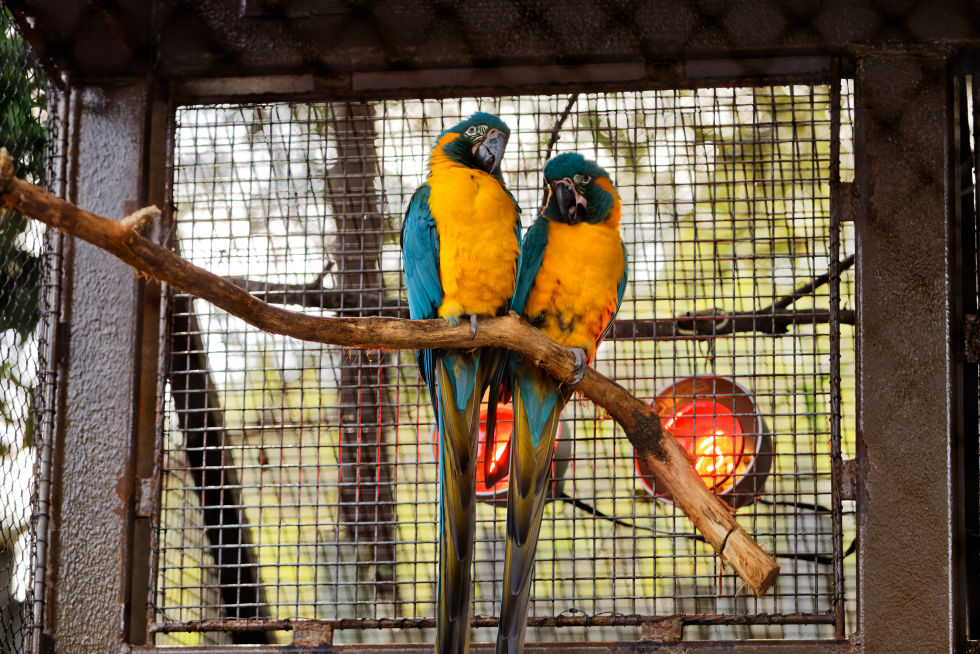
Lee Hutchinson
5D Mark III, EF70-200mm f/2.8L USM @ 110mm, 1/160 sec at f/3.5, ISO 100.
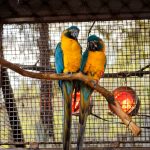
Lee Hutchinson
5D Mark III, EF70-200mm f/2.8L USM @ 110mm, 1/160 sec at f/3.5, ISO 100.
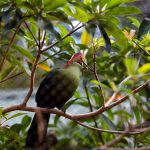
Lee Hutchinson
5D Mark III, EF70-200mm f/2.8L USM @ 108mm, 1/125 sec at f/3.2, ISO 100.
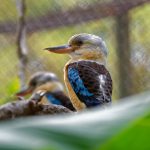
Lee Hutchinson
5D Mark III, EF70-200mm f/2.8L USM @ 115mm, 1/125 sec at f/3.2, ISO 100.
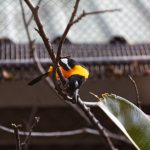
Lee Hutchinson
5D Mark III, EF70-200mm f/2.8L USM @ 200mm, 1/160 sec at f/2.8, ISO 125.
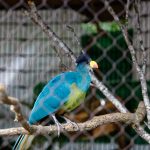
Lee Hutchinson
5D Mark III, EF70-200mm f/2.8L USM @ 105mm, 1/125 sec at f/2.8, ISO 125.

Lee Hutchinson
5D Mark III, EF70-200mm f/2.8L USM @ 200mm, 1/200 sec at f/2.8, ISO 100.

Lee Hutchinson
5D Mark III, EF70-200mm f/2.8L USM @ 70mm, 1/80 sec at f/3.2, ISO 100.

Lee Hutchinson
5D Mark III, EF70-200mm f/2.8L USM @ 135mm, 1/125 sec at f/2.8, ISO 200.

Lee Hutchinson
5D Mark III, EF70-200mm f/2.8L USM @ 70mm, 1/100 sec at f/3.5, ISO 200.

Lee Hutchinson
5D Mark III, EF24-105mm f/4L USM @ 28mm, 1/100 sec at f/7.1, ISO 100.

Lee Hutchinson
5D Mark III, EF70-200mm f/2.8L USM @ 70mm, 1/200 sec at f/5.0, ISO 100.

Lee Hutchinson
5D Mark III, EF70-200mm f/2.8L USM @ 200mm, 1/320 sec at f/3.5, ISO 100.
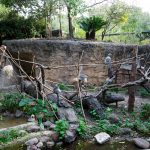
Lee Hutchinson
5D Mark III, EF24-105mm f/4L USM @ 28mm, 1/40 sec at f/4.5, ISO 100.

Lee Hutchinson
5D Mark III, EF70-200mm f/2.8L USM @ 200mm, 1/200 sec at f/2.8, ISO 640.
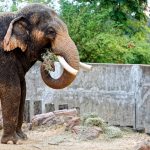
Lee Hutchinson
5D Mark III, EF70-200mm f/2.8L USM @ 135mm, 1/160 sec at f/2.8, ISO 160.
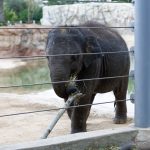
Lee Hutchinson
5D Mark III, EF70-200mm f/2.8L USM @ 70mm, 1/80 sec at f/3.2, ISO 100.

Lee Hutchinson
5D Mark III, EF70-200mm f/2.8L USM @ 155mm, 1/500 sec at f/4, ISO 100.
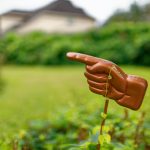
Lee Hutchinson
5D Mark III, EF35mm f/1.4L USM, 1/1000 sec at f/1.4, ISO 100.

Lee Hutchinson
5D Mark III, EF35mm f/1.4L USM, 1/800 sec at f/1.4, ISO 100.
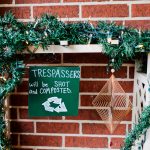
Lee Hutchinson
5D Mark III, EF35mm f/1.4L USM, 1/125 sec at f/2.8, ISO 400.
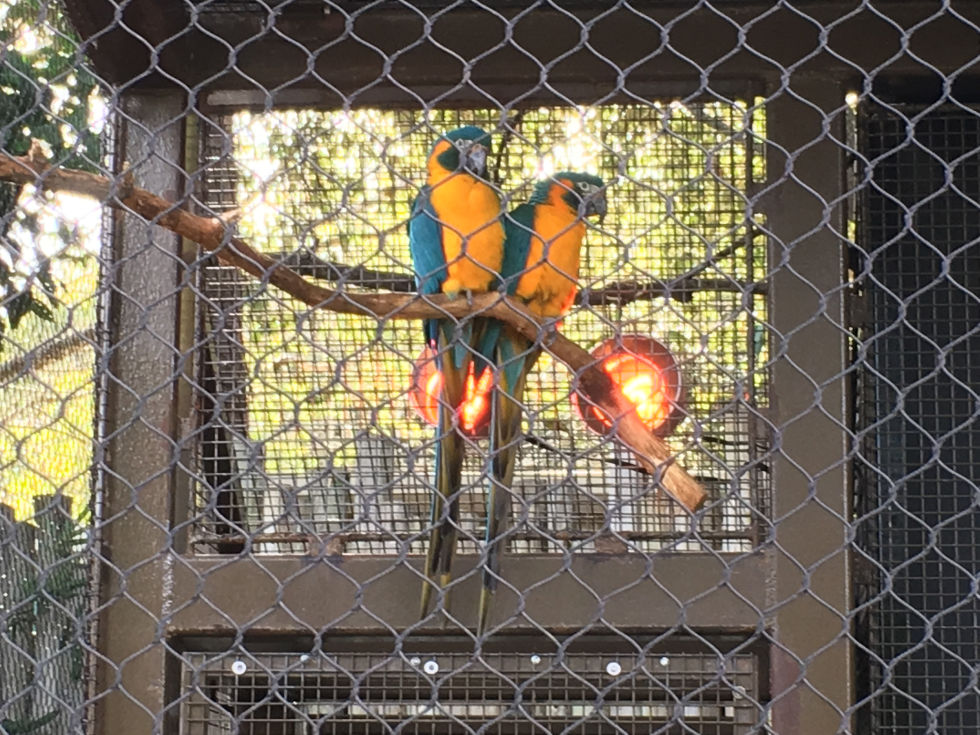
Lee Hutchinson
iPhone 6S+ back camera (4.15mm, f/2.2), 1/60 sec at f/2.2, ISO 32 (digital zoom).
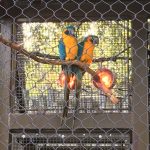
Lee Hutchinson
iPhone 6S+ back camera (4.15mm, f/2.2), 1/60 sec at f/2.2, ISO 32 (digital zoom).
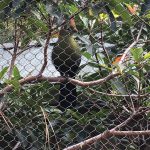
Lee Hutchinson
iPhone 6S+ back camera (4.15mm, f/2.2), 1/120 sec at f/2.2, ISO 25 (digital zoom).

Lee Hutchinson
iPhone 6S+ back camera (4.15mm, f/2.2), 1/380 sec at f/2.2, ISO 25 (digital zoom).
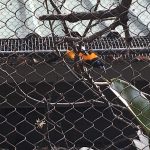
Lee Hutchinson
iPhone 6S+ back camera (4.15mm, f/2.2), 1/320 sec at f/2.2, ISO 25 (digital zoom).
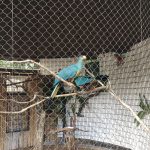
Lee Hutchinson
iPhone 6S+ back camera (4.15mm, f/2.2), 1/60 sec at f/2.2, ISO 32.
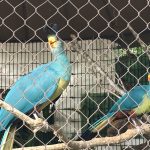
Lee Hutchinson
iPhone 6S+ back camera (4.15mm, f/2.2), 1/60 sec at f/2.2, ISO 32 (digital zoom).
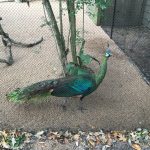
Lee Hutchinson
iPhone 6S+ back camera (4.15mm, f/2.2), 1/30 sec at f/2.2, ISO 25.

Lee Hutchinson
iPhone 6S+ back camera (4.15mm, f/2.2), 1/30 sec at f/2.2, ISO 40.

Lee Hutchinson
iPhone 6S+ back camera (4.15mm, f/2.2), 1/120 sec at f/2.2, ISO 40 (digital zoom).
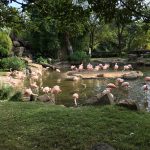
Lee Hutchinson
iPhone 6S+ back camera (4.15mm, f/2.2), 1/340 sec at f/2.2, ISO 25.
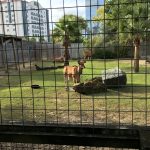
Lee Hutchinson
iPhone 6S+ back camera (4.15mm, f/2.2), 1/350 sec at f/2.2, ISO 25.
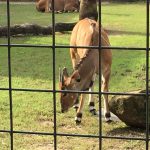
Lee Hutchinson
iPhone 6S+ back camera (4.15mm, f/2.2), 1/370 sec at f/2.2, ISO 25 (digital zoom).

Lee Hutchinson
iPhone 6S+ back camera (4.15mm, f/2.2), 1/40 sec at f/2.2, ISO 25.

Lee Hutchinson
iPhone 6S+ back camera (4.15mm, f/2.2), 1/30 sec at f/2.2, ISO 40 (digital zoom).
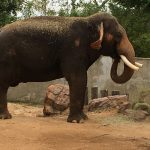
Lee Hutchinson
iPhone 6S+ back camera (4.15mm, f/2.2), 1/350 sec at f/2.2, ISO 25 (digital zoom).

Lee Hutchinson
iPhone 6S+ back camera (4.15mm, f/2.2), 1/220 sec at f/2.2, ISO 25 (digital zoom).

Lee Hutchinson
iPhone 6S+ back camera (4.15mm, f/2.2), 1/680 sec at f/2.2, ISO 25 (digital zoom).
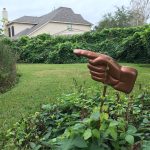
Lee Hutchinson
iPhone 6S+ back camera (4.15mm, f/2.2), 1/160 sec at f/2.2, ISO 25.

Lee Hutchinson
iPhone 6S+ back camera (4.15mm, f/2.2), 1/120 sec at f/2.2, ISO 40.

Lee Hutchinson
iPhone 6S+ back camera (4.15mm, f/2.2), 1/15 sec at f/2.2, ISO 25.
The zoo images were taken at the Houston Zoo over Thanksgiving week in 2015, while the back yard images were taken the next week. I hadn't yet received the two rented Canon L lenses for the zoo trip, so most of the images were taken with either the 24-105mm f/4L or the 70-200mm f/2.8L. A lot of the iPhone versions were shot with digital zoom in order to match the DSLR's framing—this had an extremely deleterious effect on image quality. I didn't realize just how bad the digital zoom images would look. It's not obvious from the iPhone's display when you're taking or reviewing them; only when you view the images on a large monitor can you see just how much quality you've lost. If I'd known how terrible the zoomed pix were going to look, I wouldn't have used the digital zoom at all.
Also, most of the DSLR shots for this outing were done in P mode instead of manual, hence the odd partial-stop ISOs and apertures on a few of the images.
Photo set two: Outdoors, twilight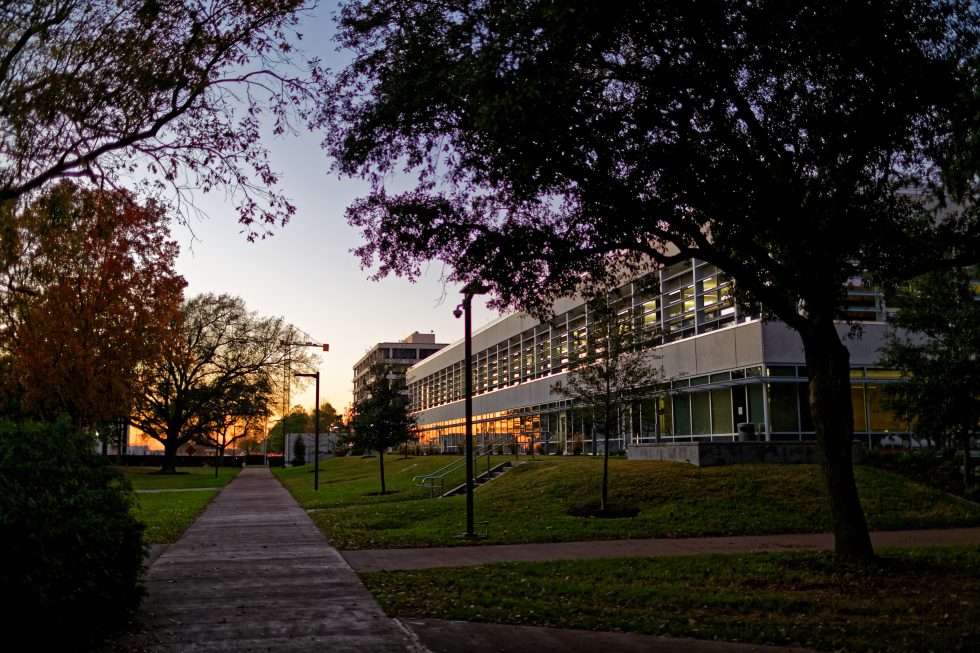
Lee Hutchinson
5D Mark III, EF35mm f/1.4L USM, 1/125 sec at f/1.4, ISO 200.

Lee Hutchinson
5D Mark III, EF35mm f/1.4L USM, 1/125 sec at f/1.4, ISO 200.
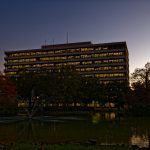
Lee Hutchinson
5D Mark III, EF35mm f/1.4L USM, 1/160 sec at f/1.4, ISO 200.
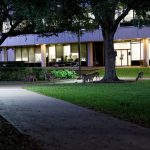
Lee Hutchinson
5D Mark III, EF70-200mm f/2.8L USM @ 73mm, 1/100 sec at f/2.8, ISO 4000.
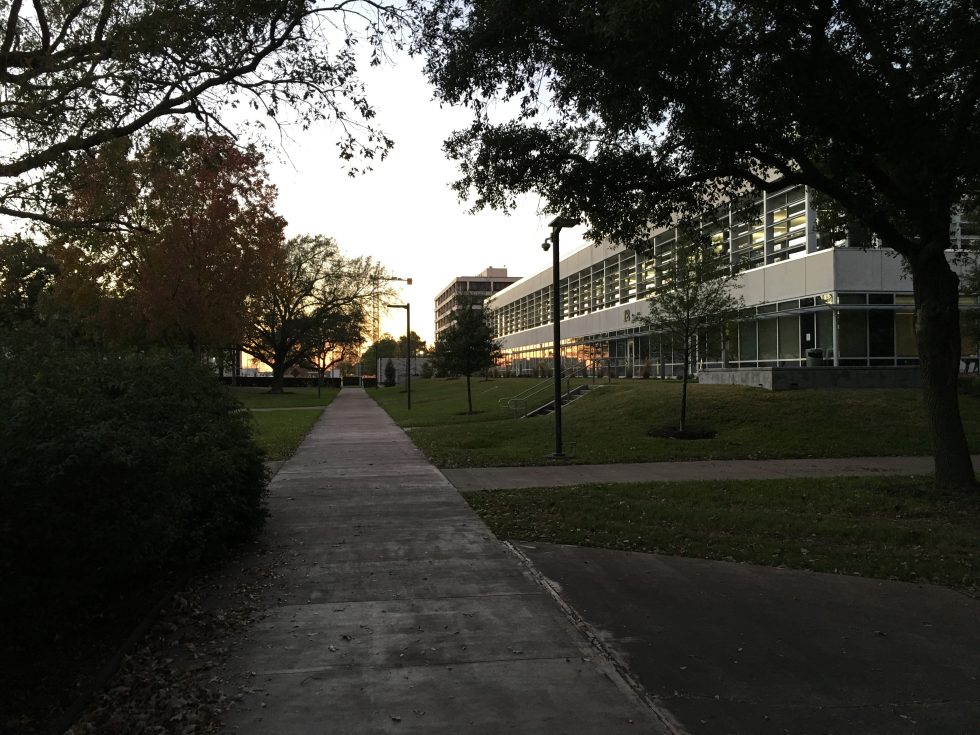
Lee Hutchinson
iPhone 6S+ back camera (4.15mm, f/2.2), 1/15 sec at f/2.2, ISO 50.
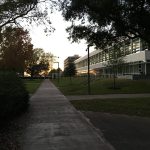
Lee Hutchinson
iPhone 6S+ back camera (4.15mm, f/2.2), 1/15 sec at f/2.2, ISO 50.
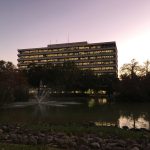
Lee Hutchinson
iPhone 6S+ back camera (4.15mm, f/2.2), 1/15 sec at f/2.2, ISO 50.
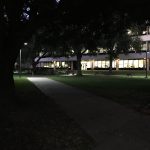
Lee Hutchinson
iPhone 6S+ back camera (4.15mm, f/2.2) - EXIF data missing or corrupted, not sure why.
The NASA outdoor images were taken at the Johnson Space Center on the evening of December 2 (I was there to watch the CRS Orb-4 launch). I'm not sure why, but the EXIF information was missing or corrupted on the last iPhone picture, so the shutter speed and ISO aren't available.
Photo set three: Indoors, normal light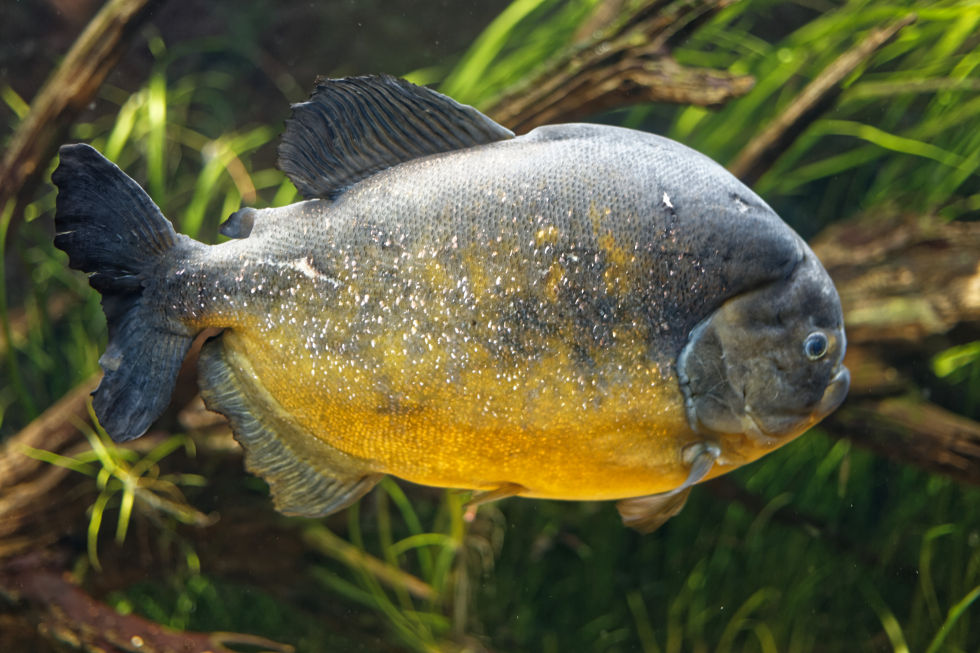
Lee Hutchinson
5D Mark III, EF50mm f/1.8 II, 1/40 sec at f/2.5, ISO 200.

Lee Hutchinson
5D Mark III, EF50mm f/1.8 II, 1/40 sec at f/2.5, ISO 200.

Lee Hutchinson
5D Mark III, EF50mm f/1.8 II, 1/40 sec at f/1.8, ISO 500.
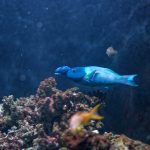
Lee Hutchinson
5D Mark III, EF50mm f/1.8 II, 1/40 sec at f/2.0 ISO 500.
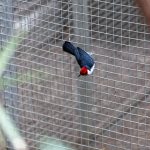
Lee Hutchinson
5D Mark III, EF70-200mm f/2.8L USM @ 200mm, 1/100 sec at f/2.8, ISO 3200.
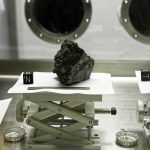
Lee Hutchinson
5D Mark III, EF50mm f/1.8 II, 1/60 sec at f/3.5, ISO 800.
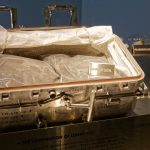
Lee Hutchinson
5D Mark III, EF50mm f/1.8 II, 1/60 sec at f/5.0, ISO 800.

Lee Hutchinson
5D Mark III, EF24-70mm f/2.8L II USM @ 24mm, 1/100 sec at f/4.0, ISO 200.

Lee Hutchinson
5D Mark III, EF24-105mm f/4L IS USM @ 24mm, 0.3 sec at f/8.0, ISO 100 (tripod).
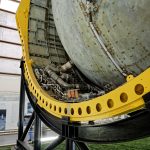
Lee Hutchinson
5D Mark III, EF24-105mm f/4L IS USM @ 24mm, 1.6 sec at f/8.0, ISO 100 (tripod).
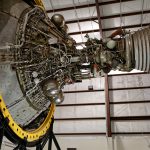
Lee Hutchinson
5D Mark III, EF24-105mm f/4L IS USM @ 28mm, 0.5 sec at f/8.0, ISO 100 (tripod).
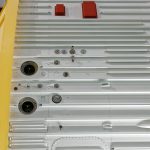
Lee Hutchinson
5D Mark III, EF24-105mm f/4L IS USM @ 65mm, 1.3 sec at f/8.0, ISO 100 (tripod).
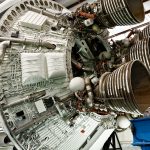
Lee Hutchinson
5D Mark III, EF24-105mm f/4L IS USM @ 35mm, 1.3 sec at f/8.0, ISO 100 (tripod).
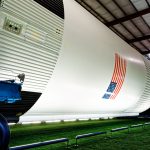
Lee Hutchinson
5D Mark III, EF24-105mm f/4L IS USM @ 24mm, 0.6 sec at f/8.0, ISO 100 (tripod).
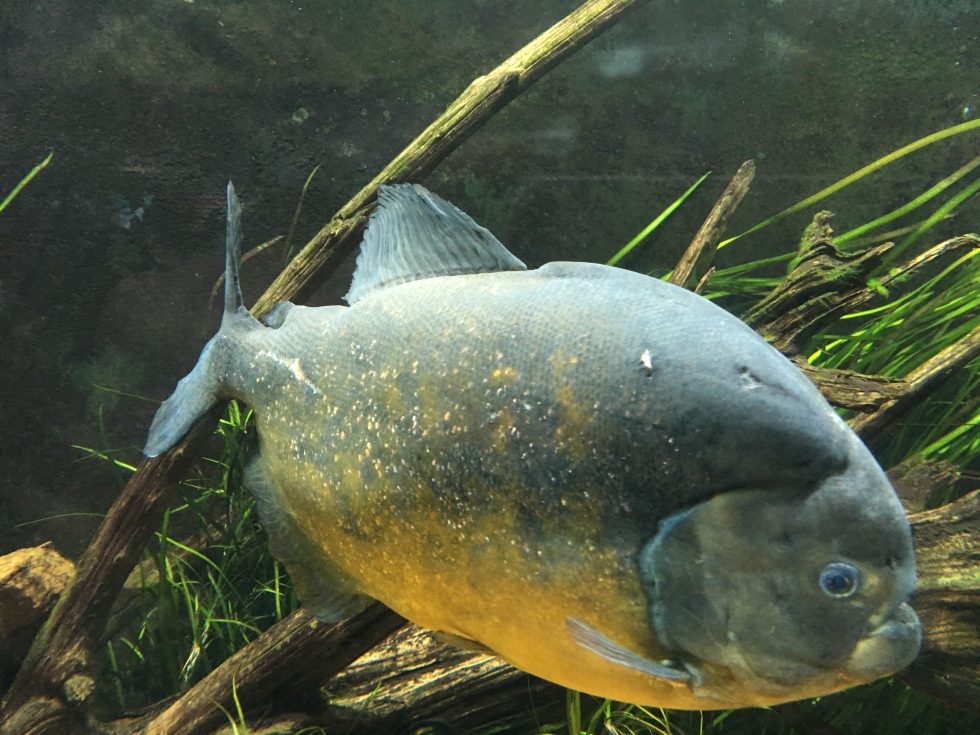
Lee Hutchinson
iPhone 6S+ back camera (4.15mm, f/2.2), 1/15 sec at f/2.2, ISO 50.
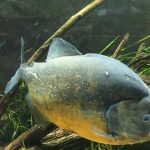
Lee Hutchinson
iPhone 6S+ back camera (4.15mm, f/2.2), 1/15 sec at f/2.2, ISO 50.

Lee Hutchinson
iPhone 6S+ back camera (4.15mm, f/2.2), 1/4 sec at f/2.2, ISO 160.

Lee Hutchinson
iPhone 6S+ back camera (4.15mm, f/2.2), 1/4 sec at f/2.2, ISO 50.

Lee Hutchinson
iPhone 6S+ back camera (4.15mm, f/2.2), 1/4 sec at f/2.2, ISO 64 (digital zoom).
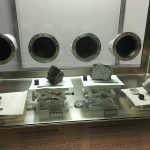
Lee Hutchinson
iPhone 6S+ back camera (4.15mm, f/2.2), 1/15 sec at f/2.2, ISO 64.
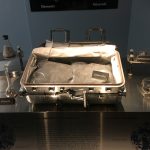
Lee Hutchinson
iPhone 6S+ back camera (4.15mm, f/2.2), 1/15 sec at f/2.2, ISO 32.

Lee Hutchinson
iPhone 6S+ back camera (4.15mm, f/2.2), 1/30 sec at f/2.2, ISO 32.

Lee Hutchinson
iPhone 6S+ back camera (4.15mm, f/2.2), 1/15 sec at f/2.2, ISO 40.
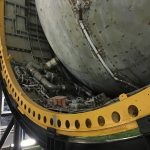
Lee Hutchinson
iPhone 6S+ back camera (4.15mm, f/2.2), 1/10 sec at f/2.2, ISO 80.
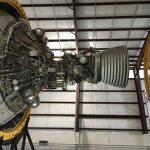
Lee Hutchinson
iPhone 6S+ back camera (4.15mm, f/2.2), 1/15 sec at f/2.2, ISO 50.
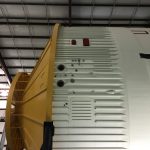
Lee Hutchinson
iPhone 6S+ back camera (4.15mm, f/2.2), 1/15 sec at f/2.2, ISO 40.
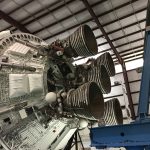
Lee Hutchinson
iPhone 6S+ back camera (4.15mm, f/2.2), 1/15 sec at f/2.2, ISO 80.
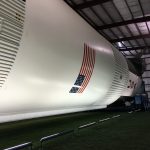
Lee Hutchinson
iPhone 6S+ back camera (4.15mm, f/2.2), 1/30 sec at f/2.2, ISO 40.
Some of these images were taken at indoor exhibits at the Houston Zoo, while others come from the Space Center Houston visitor's center. All were taken at the end of November 2015.
Photo set four: Indoors, dim light
Lee Hutchinson
5D Mark III, EF24-105mm f/4L IS USM @ 45mm, 1/40 sec at f/4.0, ISO 10000.

Lee Hutchinson
5D Mark III, EF24-105mm f/4L IS USM @ 45mm, 1/40 sec at f/4.0, ISO 10000.

Lee Hutchinson
5D Mark III, EF24-105mm f/4L IS USM @ 45mm, 1/40 sec at f/4.0, ISO 10000 (DxO Prime noise reduction at 100%).
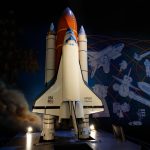
Lee Hutchinson
5D Mark III, EF24-105mm f/4L IS USM @ 24mm, 1/40 sec at f/4.0, ISO 5000.

Lee Hutchinson
5D Mark III, EF24-105mm f/4L IS USM @ 24mm, 1/40 sec at f/4.0, ISO 2500.
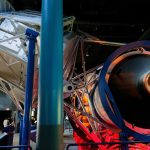
Lee Hutchinson
5D Mark III, EF24-105mm f/4L IS USM @ 24mm, 1/40 sec at f/4.0, ISO 10000.

Lee Hutchinson
5D Mark III, EF24-105mm f/4L IS USM @ 24mm, 1/40 sec at f/4.0, ISO 10000 (DxO Prime noise reduction at 100 percent).
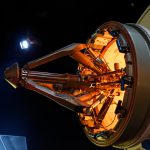
Lee Hutchinson
5D Mark III, EF24-105mm f/4L IS USM @ 35mm, 1/40 sec at f/4.0, ISO 6400.

Lee Hutchinson
5D Mark III, EF24-105mm f/4L IS USM @ 50mm, 1/40 sec at f/4.0, ISO 8000.

Lee Hutchinson
5D Mark III, EF24-105mm f/4L IS USM @ 35mm, 1/4 sec at f/4.0, ISO 1600.

Lee Hutchinson
5D Mark III, EF24-105mm f/4L IS USM @ 24mm, 8 sec at f/8.0, ISO 800 (tripod).
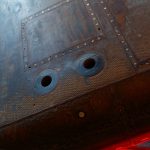
Lee Hutchinson
5D Mark III, EF24-105mm f/4L IS USM @ 47mm, 8 sec at f/8.0, ISO 800 (tripod).

Lee Hutchinson
5D Mark III, EF24-105mm f/4L IS USM @ 28mm, 10 sec at f/8.0, ISO 320 (tripod).
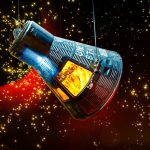
Lee Hutchinson
5D Mark III, EF24-105mm f/4L IS USM @ 32mm, 30 sec at f/8.0, ISO 320 (tripod).

Lee Hutchinson
5D Mark III, EF24-105mm f/4L IS USM @ 47mm, 1 sec at f/8.0, ISO 320 (tripod).
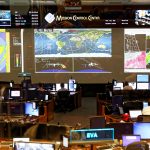
Lee Hutchinson
5D Mark III, EF24-70mm f/2.8L II USM @ 53mm, 1/60 sec at f/2.8, ISO 1000.

Lee Hutchinson
5D Mark III, EF35mm f/1.4L USM, 1/50 sec at f/2.8, ISO 400.
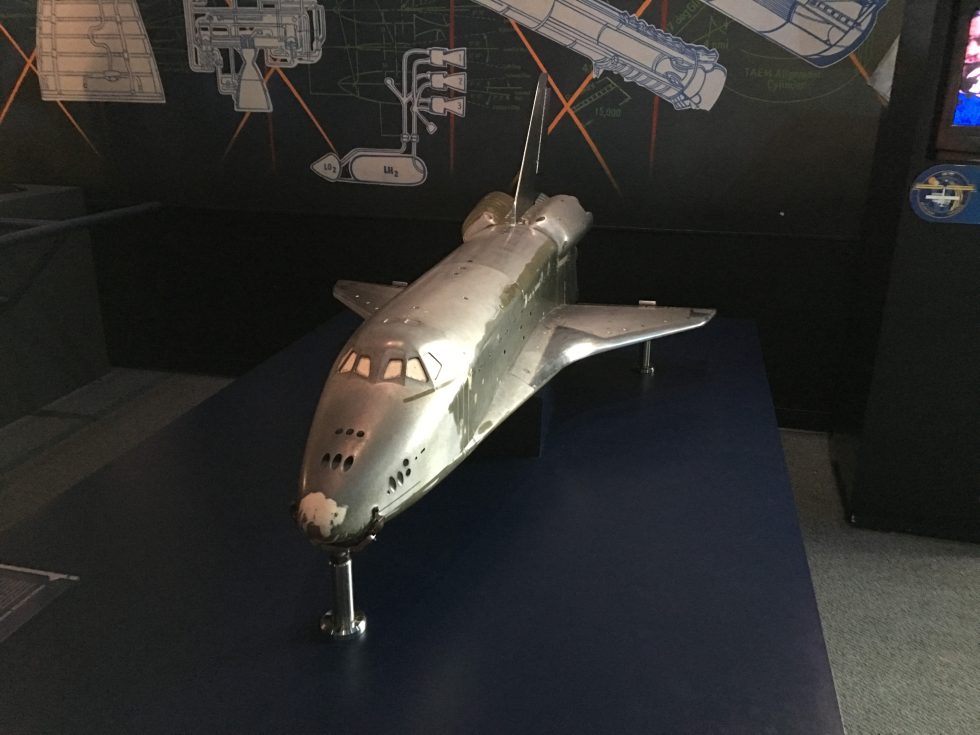
Lee Hutchinson
iPhone 6S+ back camera (4.15mm, f/2.2), 1/4 sec at f/2.2, ISO 250.

Lee Hutchinson
iPhone 6S+ back camera (4.15mm, f/2.2), 1/4 sec at f/2.2, ISO 250.

Lee Hutchinson
iPhone 6S+ back camera (4.15mm, f/2.2), 1/4 sec at f/2.2, ISO 100.
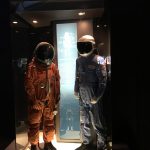
Lee Hutchinson
iPhone 6S+ back camera (4.15mm, f/2.2), 1/4 sec at f/2.2, ISO 64.

Lee Hutchinson
iPhone 6S+ back camera (4.15mm, f/2.2), 1/4 sec at f/2.2, ISO 320.

Lee Hutchinson
iPhone 6S+ back camera (4.15mm, f/2.2), 1/4 sec at f/2.2, ISO 250.
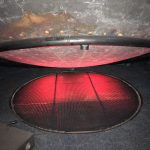
Lee Hutchinson
iPhone 6S+ back camera (4.15mm, f/2.2), 1/15 sec at f/2.2, ISO 2000.
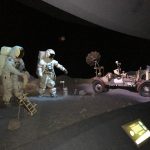
Lee Hutchinson
iPhone 6S+ back camera (4.15mm, f/2.2), 1/15 sec at f/2.2, ISO 1000.

Lee Hutchinson
iPhone 6S+ back camera (4.15mm, f/2.2), 1/15 sec at f/2.2, ISO 1250 (digital zoom).
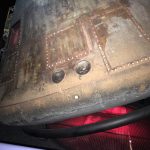
Lee Hutchinson
iPhone 6S+ back camera (4.15mm, f/2.2), 1/15 sec at f/2.2, ISO 800.
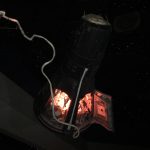
Lee Hutchinson
iPhone 6S+ back camera (4.15mm, f/2.2), 1/15 sec at f/2.2, ISO 500.
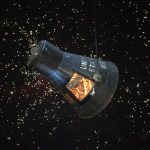
Lee Hutchinson
iPhone 6S+ back camera (4.15mm, f/2.2), 1/15 sec at f/2.2, ISO 1600 (digital zoom).
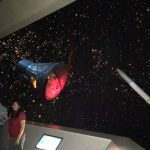
iPhone 6S+ back camera (4.15mm, f/2.2), 1/15 sec at f/2.2, ISO 2000.
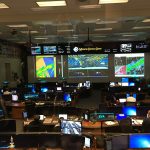
Lee Hutchinson
iPhone 6S+ back camera (4.15mm, f/2.2), 1/10 sec at f/2.2, ISO 80.

Lee Hutchinson
iPhone 6S+ back camera (4.15mm, f/2.2), 1/4 sec at f/2.2, ISO 64.
For two of the DSLR images, I included alternate versions with very aggressive de-noising using DxO's Prime de-noise function. The effect is pronounced, though it comes at the cost of fine detail.
Photo set five: Studio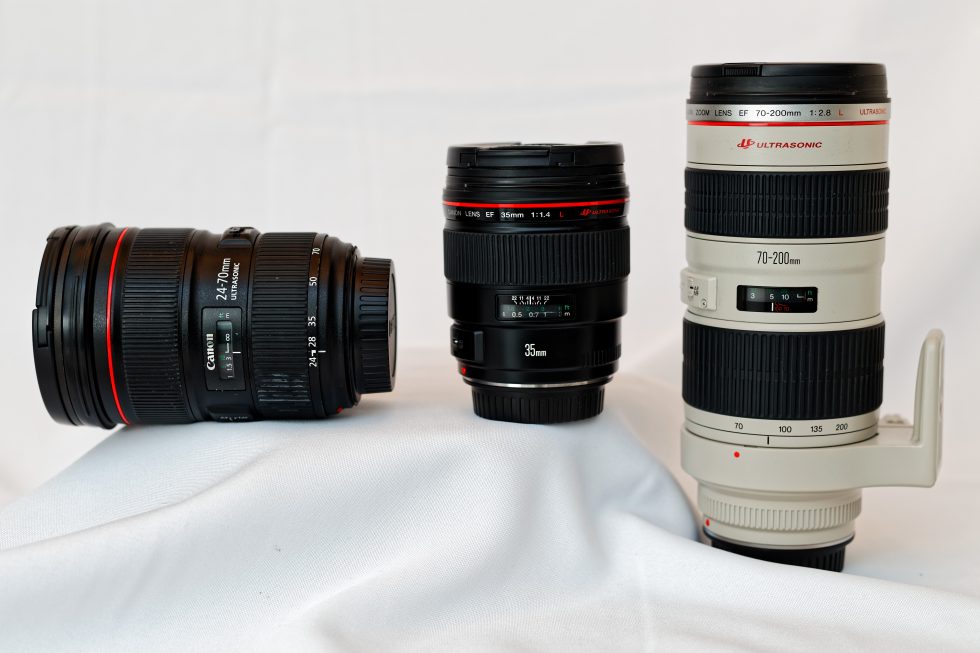
Lee Hutchinson
5D Mark III, EF50mm f/1.8 II, 1/40 sec at f/4.0, ISO 100 (tripod, off-camera flash).

Lee Hutchinson
5D Mark III, EF50mm f/1.8 II, 1/40 sec at f/4.0, ISO 100 (tripod, off-camera flash).

Lee Hutchinson
5D Mark III, EF35mm f/1.4 USM, 1/40 sec at f/4.0, ISO 100 (tripod, off-camera flash).

Lee Hutchinson
5D Mark III, EF35mm f/1.4 USM, 1/10 sec at f/2.8, ISO 100 (tripod, off-camera flash).

Lee Hutchinson
5D Mark III, EF35mm f/1.4 USM, 1/40 sec at f/11, ISO 100 (tripod, off-camera flash).

Lee Hutchinson
iPhone 6S+ back camera (4.15mm, f/2.2), 1/15 sec at f/2.2, ISO 64.

Lee Hutchinson
iPhone 6S+ back camera (4.15mm, f/2.2), 1/15 sec at f/2.2, ISO 64.

Lee Hutchinson
iPhone 6S+ back camera (4.15mm, f/2.2), 1/15 sec at f/2.2, ISO 40.

Lee Hutchinson
iPhone 6S+ back camera (4.15mm, f/2.2), 1/15 sec at f/2.2, ISO 32.
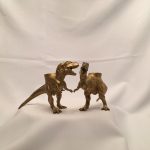
Lee Hutchinson
iPhone 6S+ back camera (4.15mm, f/2.2), 1/15 sec at f/2.2, ISO 40.
Finally, some product photography-style shots. The DSLR images were taken with off-camera flash for more even lighting.
What have we learned?One of the reasons some of the DSLR shots look massively better than the iPhone counterpart images is because of post-processing—that is, adjusting the image in an application like Lightroom or DxO in order to bring out (or hide) certain aspects. I don't claim to be anything other than an amateur at post, but even some quick tuning can make a lot of difference to an image. Compare this before and after:

Lee Hutchinson
How nondestructive post-processing of RAW files can bring out hidden things in an image. Here's the before...

Lee Hutchinson
How nondestructive post-processing of RAW files can bring out hidden things in an image. Here's the before...

Lee Hutchinson
...and here's the after.
Post-processing is made a lot easier by shooting RAW—that is, by having the DSLR record not a finished image, but the raw output of its sensor. A RAW-aware photo processing application like Lightroom can read RAW files and transform them into images; more importantly, post-processing on RAW files is non-destructive, and you can do a tremendous amount of adjustment on the resulting images. You gain a lot more flexibility over having your camera produce your "final" images for you. In fact, many pro photographers will tell you that it's impossible to get every image right "in camera" and that post-processing is a mandatory step in any kind of photo workflow.
Post-processing aside, the iPhone's inability to do any kind of optical zoom limits your ability to compose a shot. Attempting any framing that required a zoom dropped the iPhone's images into the trashcan. If you have to zoom in on a smartphone to get the shot you want, you should either get closer to your subject or just give up. If I'd realized how bad some of the digitally zoomed images were going to turn out, I wouldn't have taken them in the first place.
Even on images without zooming, the iPhone had a harder time with some things—see, for example, the outdoor zoo images with a fence between us and the birds. With a shallow enough depth of field, the DSLR could focus through the fence, making it effectively invisible. The iPhone could not.
There are lots of other areas where the iPhone is at a disadvantage—particularly where it comes to noise reduction and fine detail—but those areas are heavily overbalanced by the fact that the iPhone is far less expensive and far more portable than a giant bag of camera gear. In most situations today, people already carry a smartphone; unless you're a pro photographer, though, you won't likely haul a DSLR kit everywhere you go.
Winner: It depends, but…Ultimately, the winner here is the smartphone, not the DSLR. The DSLR triumphs technically, and it will produce better images under almost any circumstance, but it's just hella hard to stack it against the iPhone's portability and "good enough"-ness.
Is the smartphone better? No. The DSLR and its lenses, even in my unskilled hands, produce higher-quality images, period. They're higher resolution, and they contain more detail. It's impossible for the iPhone's little 8.5mm-ish sensor to grab as many photons as the DSLR's big 35mm full-frame sensor. The DSLR wins every time, and the iPhone's output, while good, isn't as good.
But that's the thing: the smartphone may not produce the same massive, high-detail 22MP images as the full-frame DSLR, but the smartphone does manage to be good enough. Under most lighting conditions indoor or outdoor, the iPhone produced images that were perfectly acceptable—more than good enough to post on Facebook or e-mail to friends and family. If you're taking photos for print publication, a DSLR is the way to go; for personal use, a smartphone is perfectly fine. Even if cost is no object and dropping $9,000 on a DSLR and a bunch of lenses doesn't faze you, the smartphone is still good enough for just about anything.
So rejoice, casual photographers—that smartphone in your pocket is almost certainly more than enough camera to capture just about anything you're likely to encounter, day or night, indoor or outdoor. Unless you specifically need it—and you'd know it if you did—you don't have to lug a DSLR around to take amazing images.
But on the other hand, it wouldn't hurt.
Source: Shootout redux: Smartphone camera vs tricked-out DSLR, one year later
No comments:
Post a Comment